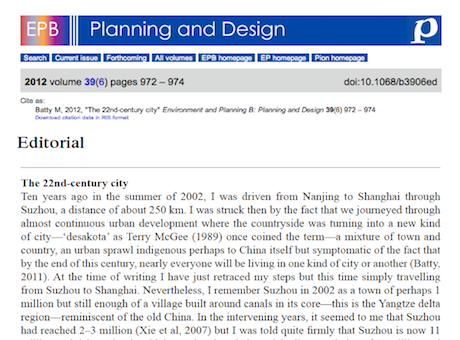The 22nd Century City
We will all be living in cities by the end of this century (see EPA, 2011) and for the most part, cities will constitute a complex web of local-global relationships that defies our present understanding. On this way to the future, we will of course invent new ways of dealing with coupled networks and flow systems that hopefully will enable us to understand, visualise, perhaps even manage and plan such cities in ways that seek to improve their quality of life across all dimensions. In the current editorial in Environment and Planning B, I seek to characterise what cities will be all about in one hundred years at the beginning of the 22nd century and make the point that we need to visualise such artefacts as mosaics of local and global linkages not by mapping networks but by moving back to new conceptions of how the heterogeneity of such global cities can be ground in place, where different parts of the cities where different groups of people live, work, and move imply different levels of globalisation. In planning the future city, the extent to which localities are dominate by this wide spectrum of linkages on the local-global continuum will be essential to such understanding , and I urge readers to begin to construct maps of cities that are composed in this manner. This is of course is only a prelude to developing a commensurate understanding.

